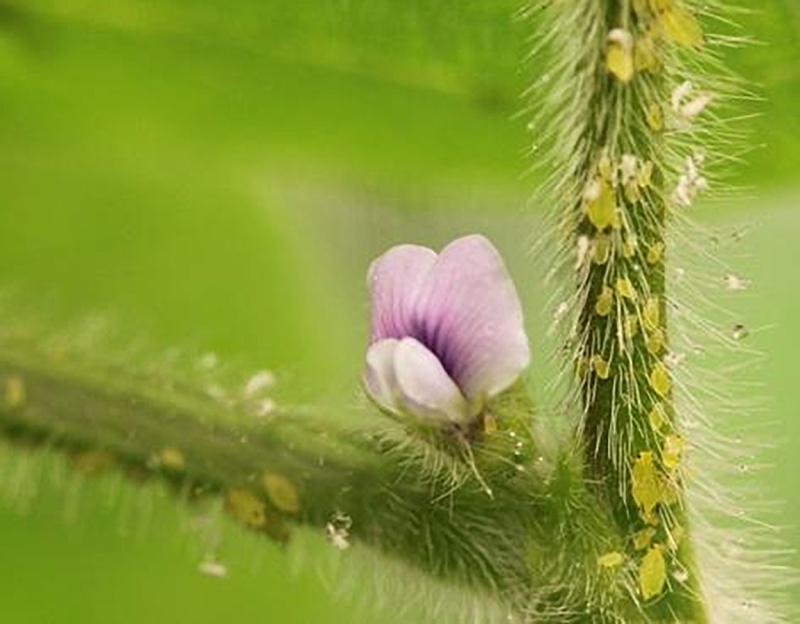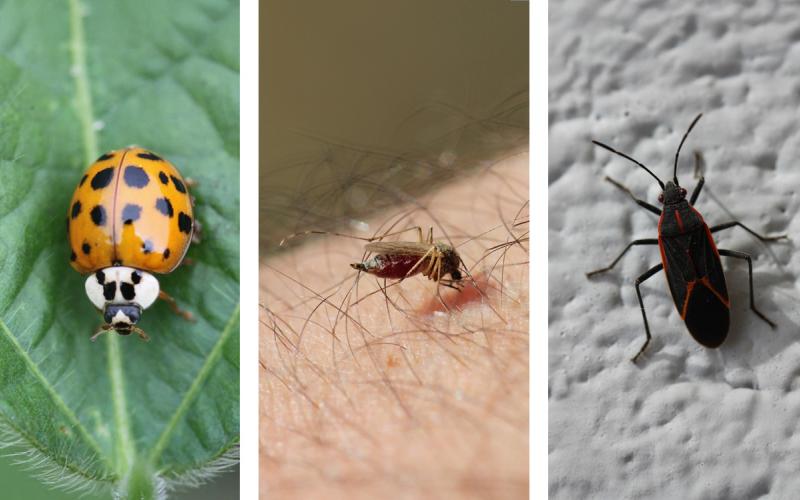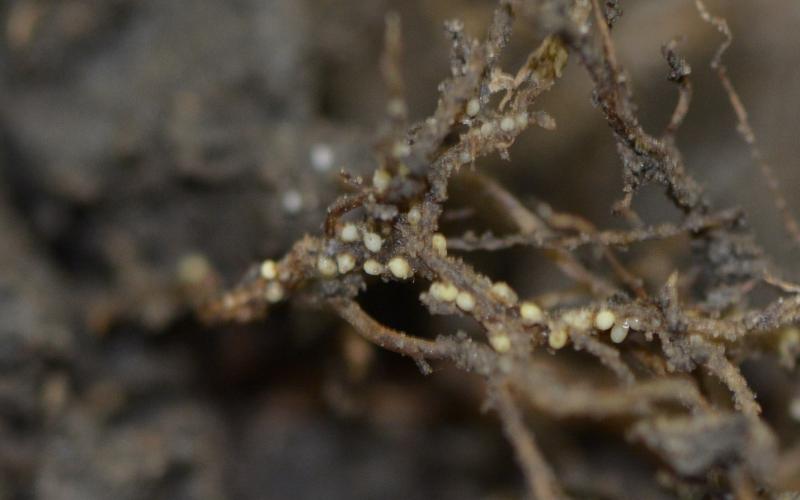Written collaboratively by Adam Varenhorst, Amanda Bachmann, Philip Rozeboom, Patrick Wagner, and Brad McManus.
Originally Submitted: July 17, 2023
While scouting soybean this week, I noticed small populations of soybean aphids (Figure 1) in the Volga and South Shore areas.

Field averages were still close to zero, with only three to four aphids on infested plants. This indicates that the infestations are recent, and insecticide applications aren’t necessary for population management. However, this is a good reminder that soybean aphid scouting should be ongoing to ensure that populations don’t exceed thresholds.
Scouting for Soybean Aphids
There are two methods that can be used to effectively scout for soybean aphids:
Traditional Scouting
The traditional scouting method is where 20 plants from multiple locations spread throughout a field are examined for soybean aphids.
When soybean aphids are present, they are counted, and the total number of infested plants and the number of soybean aphids per plant are recorded. Management is necessary when at least 80% of the plants are infested with 250 or more soybean aphids. One of the issues with this method is that it can be time consuming.
Speed Scouting
Speed scouting for soybean aphids is an alternative to counting all of the aphids present on scouted plants. Speed scouting is a binomial sequential sampling program that is actually based off the 250 aphids-per-plant threshold. It was designed to provide a method of scouting that would provide accurate management decisions while saving time.
The speed scouting method uses a decision population of 40 aphids per plant. A worksheet is available for use while scouting with this method (Figure 2).

To use the speed scouting method, you first assess the soybean aphid populations on 11 random plants while walking in a “W” or “Z” pattern in the field. For each plant, if it has less than 40 soybean aphids you put a “-” mark on the line, and if it has more than 40 you put a “+” mark. After 11 plants are examined, you tally up the “+” marks. If there are 6 or less, you have reached a do-no-treat decision for the field. If there are 11, you have reached a treat decision. However, it is necessary to reevaluate the field 3 to 4 days later to confirm that the population is still present before an insecticide application is applied. If 7 to 10 “+” marks were observed, additional plants must be scouted. This method reduces the number of aphids that must be counted on a plant and provides accurate management decisions.
Management
If management is needed due to reaching the threshold from traditional or speed scouting, insecticide application is recommended. Currently registered insecticides for management of soybean aphid in soybean are listed in the latest South Dakota Pest Management Guide: Soybean.
Pyrethroid resistant soybean aphid populations have been documented in several counties throughout South Dakota. For this reason, if you choose to spray a pyrethroid insecticide for soybean aphid management, closely monitor the population to ensure the insecticide was effective. Alternatively, select an insecticide with a different active ingredient.
If you experience a pyrethroid failure, please contact Adam Varenhorst at adam.varenhorst@sdstate.edu.


